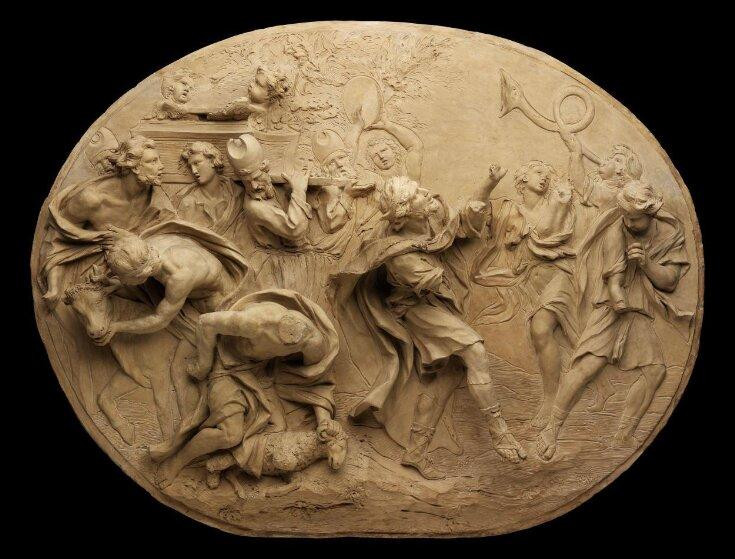The phrase “danced without leaving room for Jesus” is a common saying within Christian culture, often used to comment on couples dancing very closely. But where does this expression come from, and what does it really mean? This article explores the meaning, origins, and modern interpretations of this intriguing phrase, examining its connection to Christian values of purity and its evolving relevance.
Unpacking the Meaning: “Leave Room for Jesus”
When someone says a couple is “dancing without leaving room for Jesus,” they are suggesting that the pair is dancing so intimately that there is no space between them. The saying humorously implies that a Christian couple should maintain enough physical distance while dancing – or in any close proximity – to theoretically fit another person in between them. This imaginary “person” is Jesus.
The idea behind this saying is rooted in the belief that visualizing Jesus’ presence can act as a deterrent against inappropriate physical intimacy. It’s a lighthearted yet pointed way to encourage couples to maintain boundaries that align with Christian teachings on purity.
The Importance of Purity and “Leaving Room for Jesus”
The concept of “leaving room for Jesus” is intrinsically linked to the Christian emphasis on physical and sexual purity. The Bible stresses the importance of honoring God with our bodies, and sexual purity is often highlighted as a key aspect of this. As Paul writes in 1 Corinthians 6:18-20, urging believers to “Flee from sexual immorality.” He emphasizes that our bodies are temples of the Holy Spirit and that we are called to glorify God through our physical actions.
While interpretations of “sexual immorality” vary, premarital sex is generally considered a sin within many Christian denominations. The “leave room for Jesus” adage extends this principle to intimate dancing, suggesting that close physical contact can lead to temptation and potentially to actions deemed impure.
The phrase has evolved into various forms, all carrying the same underlying message:
- Leave room for Jesus.
- Save room for Jesus.
- Make room for Jesus.
This principle is not limited to the dance floor. It’s a reminder to maintain appropriate boundaries in all interactions. Whether it’s sitting together, sharing a meal, or spending time alone, the question remains: are you “leaving room for Jesus”?
By consciously “leaving room for Jesus,” individuals aim to create space that discourages temptation and promotes self-control. The idea is that the symbolic presence of Jesus serves as a reminder of their commitment to purity and encourages them to make choices that honor their faith. It adds a layer of accountability, suggesting that with a “divine chaperone,” couples might be more mindful of their physical interactions and avoid escalating intimacy prematurely.
It’s important to note that not all physical closeness is inherently sinful, and not every dance will lead to transgression. However, for Christians who prioritize purity, dancing, especially in close proximity, can be viewed as a potentially risky activity.
 People dancing in a room
People dancing in a room
Tracing the Origins of “Danced Without Leaving Room for Jesus”
Dance, inherently a physical and often sensual art form, has long been viewed with caution in some Christian circles. Many cultures, even in the animal kingdom, use dance as part of courtship rituals, highlighting its potential to incite attraction and intimacy. While dance can be a harmless social activity, its connection to sensuality makes it a point of consideration for Christians concerned with purity. The phrase “leave room for Jesus” likely emerged as a practical way to articulate the need for boundaries in such contexts.
While pinpointing the exact origin of “danced without leaving room for Jesus” is difficult due to limited historical records, its emergence is likely tied to societal shifts and evolving views on morality. Similar principles emphasizing purity exist in various religions, making it unsurprising that such a phrase would develop to communicate expectations around physical conduct.
The phrase probably gained traction during one of the sexual revolutions of the 20th century. Periods like the Roaring Twenties, the 1960s, and the 1990s saw increased acceptance of more permissive attitudes towards sexuality. In response, conservative Christian communities often sought to protect their youth from what they perceived as the eroding moral standards prevalent in dance halls and broader societal views on human sexuality.
This cultural backdrop fueled the rise of various purity movements, including purity pledges, rings, and balls, particularly in the 1990s. Coining the phrase “leave room for Jesus” was likely one of the informal strategies that arose during these times to reinforce the importance of maintaining physical boundaries and promoting purity within relationships.
Modern Interpretations: From Admonition to Satire
Today, while you might still hear “danced without leaving room for Jesus” or “save room for Jesus,” the context has often shifted. It’s less frequently used as a serious reprimand for lack of purity and more often employed satirically or humorously.
The phrase has permeated popular culture, appearing in unexpected places. For example, it was featured in an episode of the acclaimed ABC show, Black-ish, demonstrating its recognition beyond purely religious circles. It has also become a popular internet meme, often used to jokingly comment on overly close dancing or physical proximity in general.
Even the movie Footloose, while not explicitly using the phrase, captures the essence of the concept. Its plot revolves around a conservative community that views dancing as a corrupting influence, fearing it will compromise the virtue of their young people.
More recently, the phrase has taken on a surprising new meaning. Churches humorously adopted “leave room for Jesus” in their messaging during the COVID-19 pandemic to encourage social distancing. Posters playfully reminded congregants to “leave room for Jesus” as a way to maintain physical space and slow the spread of the virus.
Furthermore, the variation “make space for Jesus” is evolving into a broader reminder to prioritize Jesus’ influence in daily life. In an increasingly busy and distracting world, this adaptation encourages believers to intentionally create room for spiritual reflection and connection with their faith amidst the demands of modern life.
Dancing in the Bible: A Complex Picture
The Bible presents a multifaceted view of dance. It was a common and significant part of Hebrew culture, used in worship, praise, celebrations, and commemorations of victories.
Biblical Examples of Dancing for God
Miriam, Moses’ sister, led women in dance and song to celebrate God’s miraculous parting of the Red Sea: “Then Miriam the prophetess, Aaron’s sister, took a timbrel in her hand, and all the women followed her, with timbrels and dancing” (Exodus 15:20).
Following David’s triumph over Goliath, women greeted him with singing and dancing: “As they arrived home, when David returned from striking down the Philistine, the women came out of all the towns of Israel, singing and dancing to meet King Saul, with tambourines, with songs of joy, and with musical instruments. And the women sang to one another as they celebrated, ‘Saul has struck down his thousands, and David his ten thousands'” (1 Samuel 18:6-7).
 David Dancing before the Arc top image
David Dancing before the Arc top image
King David famously danced with unrestrained joy before the Lord when the Ark of the Covenant was brought to Jerusalem. His enthusiastic dancing, even to the point of his wife’s embarrassment, illustrated his passionate devotion: “And David danced before the Lord with all his might. And David was wearing a linen ephod. So David and all the house of Israel brought up the ark of the Lord with shouting and with the sound of the horn. As the ark of the Lord came into the city of David, Michal the daughter of Saul looked out from the window and saw King David leaping and dancing before the Lord, and she despised him in her heart. And they brought in the ark of the Lord and set it in its place, inside the tent that David had pitched for it. And David offered burnt offerings and peace offerings before the Lord” (2 Samuel 6:14-17).
The prophet Jeremiah also spoke of dance as a form of rejoicing in God’s blessings: “Again I will rebuild you, and you shall be rebuilt, O virgin Israel! Again you shall adorn yourself with tambourines and shall go forth in the dance of the merrymakers” (Jeremiah 31:4). And further, “Then shall the young women rejoice in the dance, and the young men and the old shall be merry. I will turn their mourning into joy; I will comfort them, and give them gladness for sorrow” (Jeremiah 31:13).
The Bible even explicitly states that there is “a time to dance,” as Ecclesiastes 3:4 notes within its reflection on the seasons of life. Psalms also encourage dance as a form of praise: “Let them praise his name with dancing; let them sing praises to him with timbrel and lyre!” (Psalm 149:3) and “Praise him with timbrel and dance; praise him with stringed instruments and pipe!” (Psalm 150:4).
Sinful Dancing in the Bible
However, the Bible also presents negative examples of dancing. The Israelites’ idolatrous worship of the golden calf involved dancing: “And as soon as he came near the camp and saw the calf and the dancing, Moses’ anger burned hot, and he threw the tablets out of his hands and broke them at the foot of the mountain” (Exodus 32:19).
 Sinful Dancing
Sinful Dancing
The prophets of Baal danced wildly around their altar in a futile attempt to summon their god: “And they took the bull that was given them, and they prepared it, and called upon the name of Baal from morning until noon, saying, “O Baal, answer us!” But there was no voice, and no one answered. And they limped around the altar that they had made” (1 Kings 18:26).
Perhaps one of the most tragic biblical accounts involving dance is the story of Herodias’ daughter, whose dance so pleased King Herod that he rashly promised her anything she desired, leading to the beheading of John the Baptist (Mark 6:22-25).
These examples demonstrate that dance itself is not inherently good or bad. Its moral implications depend on the context, intent, and manner in which it is performed. Dance can be an expression of worship and praise or an act of idolatry and manipulation. Discernment is crucial in understanding its place within a Christian life.
Did Jesus Himself Dance?
Jesus Christ serves as the ultimate example for Christian living. While the Bible doesn’t explicitly state whether Jesus danced, we can infer possibilities based on his cultural context. Jesus was Jewish, and dance was an integral part of Jewish celebrations and traditions. He likely participated in communal dances appropriate to his culture, particularly during joyous occasions. For instance, Jesus attended a wedding in Cana (John 2), where celebrations would have included dancing.
Jesus also referenced dancing in his parables, suggesting it was a familiar concept to his audience. In Luke 7:31-32, he uses the metaphor of children playing in the marketplace, saying, “‘We played the flute for you, and you did not dance; we sang a dirge, and you did not weep.'” This implies that dancing was a normal and expected response to joyful music in his time.
 person dancing for Jesus
person dancing for Jesus
Dancing for Christ: Honoring God in All Things
While we can’t know for sure if Jesus danced in the way we understand dance today, the cultural context suggests it’s probable. It’s important to remember that cultural norms around dance have evolved significantly. In Jesus’ time, and for centuries within Jewish tradition, mixed-gender dancing was often restricted due to concerns about physical intimacy.
So, what does this mean for the phrase “dancing without leaving room for Jesus”? It highlights that there is a way to engage in dance that honors God. Paul’s instruction in 1 Corinthians 10:31 provides a guiding principle: “So, whether you eat or drink, or whatever you do, do all to the glory of God.”
Unmarried Christian men and women can dance without compromising their commitment to purity. “Leaving room for Jesus” doesn’t necessarily require a literal measurement of space between dance partners. Instead, it’s a symbolic reminder to ensure that Christ is present in all aspects of our lives, including our social interactions and physical expressions. The key is to be guided by the Holy Spirit and to ask: “Does this action honor God?” If the answer is yes, then dancing can indeed be an act of dancing for Christ.
